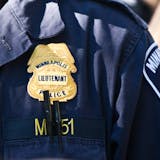In the 10 seasons since the Minnesota Twins started playing at Target Field, development has boomed in the nearby North Loop neighborhood. New apartments and condos, restaurants, breweries and offices have sprung up, and soon a 2,000-seat theater for live music will open.
But until the power-hitting Bomba Squad emerged this season, fans were left largely disappointed by the pledges of team owners — going back to Carl Pohlad himself — that a revenue-generating new ballpark would ensure the team would be more competitive on the field.
That didn't happen. Monday's game against the Yankees is only the third postseason home game ever to be played at Target Field; the first two, in the ballpark's inaugural 2010 season, were consecutive losses to the Yankees.
By way of contrast, from 2000 to 2009 the Twins played nine postseason games at the Metrodome.
"The won-loss record does not look the way we had hoped it would," said Twins President and CEO Dave St. Peter, who has been with the team since 1990. "The missing component has been a sustained competitive team."
He added: "We're finally en route to being able to check that box as well."
St. Peter said it was revenue from the ballpark that allowed the team to finally build the Bomba Squad. Even in the team's worst year at Target Field, the season-ticket base was 12,000; at the Dome, he said, that was the "upper echelon" of season-ticket sales.
With 10 seasons on the books, however, Target Field has delivered in just about every other way.


